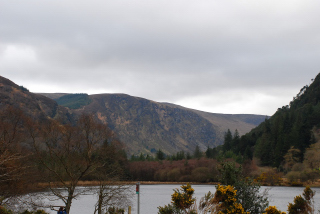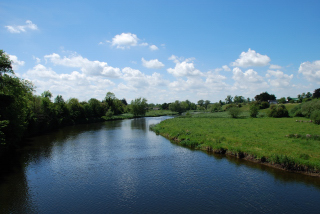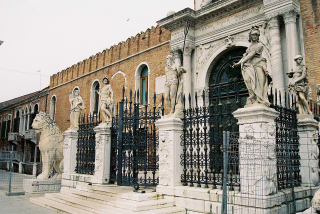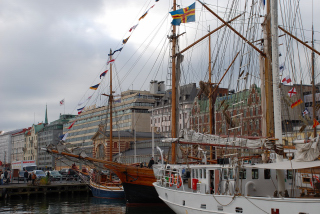Glendalough

Glendalough ( Gleann Dá Loch - Valley between 2 lakes ) is a Valley in County Wicklow. It's the site of a medieval monastic settlement. Glenndalough was also a sacred place in pre-history, with farmers driving their cattle through the waters of the lakes at Bealtaine to keep them healthy for the rest of the year. When it was in use, Glendalough was like a mini-village, with the community comprising of both ecclesiastical and lay people. There was a hospital and a farm. Manuscripts were written and copied here. Although the settlement was destroyed by english troops in 1398, it continued to be an important place of worship and pilgrimage. St. Kevin's Church Round Tower








